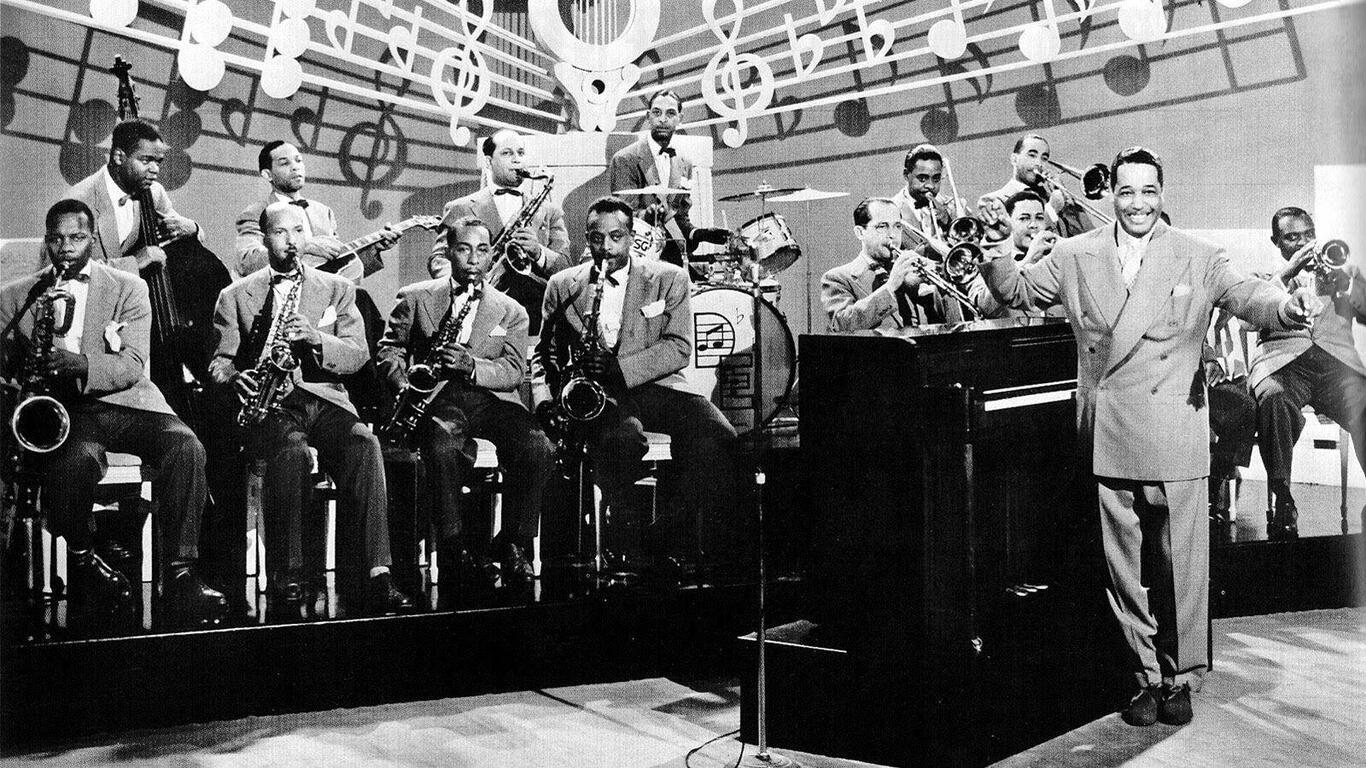It Don't Mean a Thing (If It Ain't Got That Swing) by Duke Ellington

Download It Don't Mean a Thing (If It Ain't Got That Swing) by Duke Ellington here as an MP3
Play: It Don't Mean a Thing (If It Ain't Got That Swing) by Duke Ellington
We all like music that swings, this one introduced the world to the notion of swing and presaged the swing era by three years. I keep close to the sentiment of the original, it pushed the envelope with some crazy horn parts as it steam rollered along!
"It Don't Mean a Thing (If It Ain't Got That Swing)" is a jazz standard composed by Duke Ellington, with lyrics by Irving Mills.
Here's a musical analysis
1. Swing Feel: The song epitomizes the swing style, characterized by its lively, syncopated rhythms and swinging groove. The rhythm section typically plays in a 4/4 time signature with a strong emphasis on the off-beats, creating a buoyant and danceable feel. This swinging rhythm is essential to the song's identity and is central to its title and theme.
2. Melodic Phrasing: The melody of "It Don't Mean a Thing" is catchy and memorable, featuring short, punchy phrases that mirror the rhythmic energy of the swing feel. The melody is often performed with a sense of playfulness and improvisation, allowing for expressive interpretation by the vocalist or instrumentalist.
3. Harmonic Structure: Harmonically, the song follows a classic 32-bar AABA form, common in many jazz standards. The chord changes typically include a series of dominant seventh chords, with occasional ii-V progressions and chromatic passing chords. These harmonic elements provide a harmonic framework for improvisation and serve to highlight the swinging groove of the song.
4. Call and Response: "It Don't Mean a Thing" features a call-and-response structure, where the melody is often answered by instrumental or vocal interjections. This call-and-response technique adds to the song's dynamic and interactive feel, encouraging musical dialogue and exchange between the performers.
5. Scat Singing: The song is often associated with scat singing, a vocal improvisation technique where syllables and nonsense words are used to mimic the sound of musical instruments. Scat singing adds a playful and spontaneous element to the performance, allowing the vocalist to engage in improvisational dialogue with the instrumentalists.
6. Instrumentation: The song can be performed by a variety of jazz ensembles, ranging from small combos to big bands. Common instrumentation includes saxophones, trumpets, trombones, piano, bass, and drums. Each instrument contributes to the overall texture and groove of the song, with opportunities for solo improvisation and collective interaction.
Overall, "It Don't Mean a Thing (If It Ain't Got That Swing)" is a quintessential jazz standard that embodies the spirit of the swing era. Its infectious groove, memorable melody, and interactive call-and-response structure have made it a beloved and enduring piece of jazz music that continues to delight audiences of all ages.